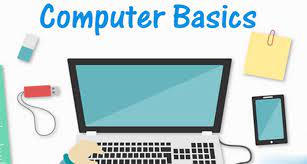The Basics of a Computer
Computers use a sequence of instructions, called instructions, to accomplish a specific task. These instructions are decoded by the control unit and translated into the control signals the computer needs to execute them. Some computers have control systems that change the order that instructions are executed. A common example is when a program wants to perform a specific mathematical operation. This control system is called the flow of control, and it allows the computer to perform the required task without human intervention.
The processor, also known as the central processing unit, is the core of the computer. It is located deep inside the computer and works very hard. Because of this, it can become very hot. A fan is usually present to prevent the CPU from overheating. A computer will also have a hard drive and RAM, both of which store and process data. A hard drive is a permanent storage space for data and is typically slower than RAM. The latter is the more common choice for the average user.
A mechanical computer used to be very different from the computer we know today. It had sharp gears and looked like cutting tools. Then, a new generation of computers was created that could perform complex mathematical tasks and store results in memory. Computers are now cheap enough to be embedded into everyday appliances like rice cookers. They can also route telephone connections through a network and perform a variety of other tasks, like controlling mechanical systems. A computer can even run different programs simultaneously.
A computer accepts raw data as input and processes it with a set of instructions. The computer then renders an output, which is usually a numerical or non-numerical calculation. This output can be stored for future use. Computers can be divided into two types: the basic and the advanced. You should understand the differences between the two and understand how each one works. If you are wondering how a computer works, take a look at the definition of a computer. It is a powerful tool that can handle just about any task you can throw at it.
The basic components of a computer are RAM, CPU, hard disk, and storage space. A workstation is more complex and expensive than a typical PC. It is often used for technical and scientific purposes and has a high speed graphics adapter and larger RAM. Workstations are also more powerful and can handle large amounts of data. The speed of the computer depends on its hardware and software. The more advanced computers can handle complex tasks like CAD, animation, audio, and video creation.
In addition to these basic parts, a computer has special memory cells called registers. These registers can read data much faster than the main memory. Since registers are used for the most commonly needed data, they reduce the need for accessing the main memory. By doing so, the computer will be much faster. The CPU is made up of between two and one hundred registers. It is also used to store pictures. It is important to note that not all computers have the same number of registers.

